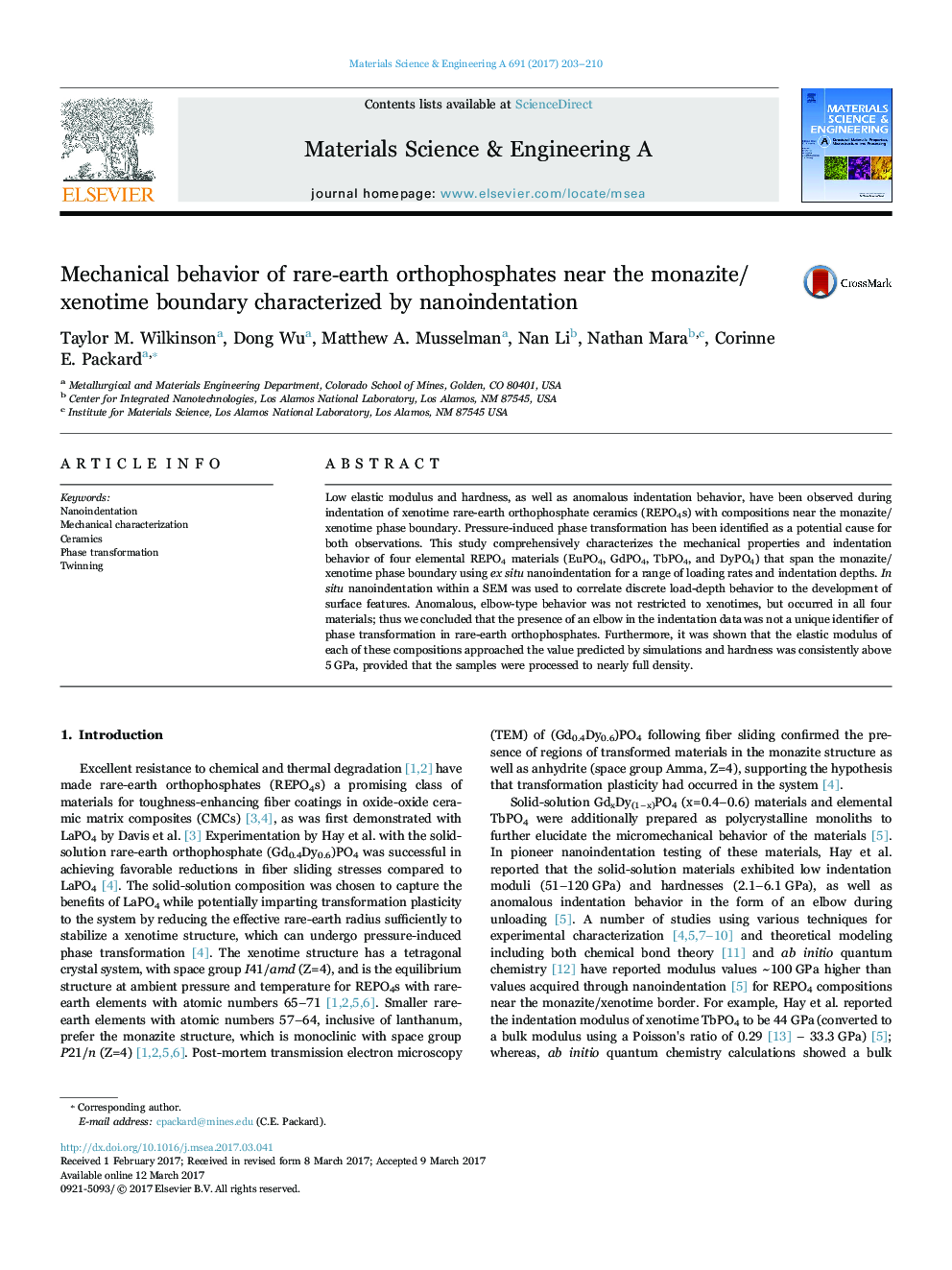| Article ID | Journal | Published Year | Pages | File Type |
|---|---|---|---|---|
| 5455917 | Materials Science and Engineering: A | 2017 | 8 Pages |
Abstract
Low elastic modulus and hardness, as well as anomalous indentation behavior, have been observed during indentation of xenotime rare-earth orthophosphate ceramics (REPO4s) with compositions near the monazite/xenotime phase boundary. Pressure-induced phase transformation has been identified as a potential cause for both observations. This study comprehensively characterizes the mechanical properties and indentation behavior of four elemental REPO4 materials (EuPO4, GdPO4, TbPO4, and DyPO4) that span the monazite/xenotime phase boundary using ex situ nanoindentation for a range of loading rates and indentation depths. In situ nanoindentation within a SEM was used to correlate discrete load-depth behavior to the development of surface features. Anomalous, elbow-type behavior was not restricted to xenotimes, but occurred in all four materials; thus we concluded that the presence of an elbow in the indentation data was not a unique identifier of phase transformation in rare-earth orthophosphates. Furthermore, it was shown that the elastic modulus of each of these compositions approached the value predicted by simulations and hardness was consistently above 5Â GPa, provided that the samples were processed to nearly full density.
Related Topics
Physical Sciences and Engineering
Materials Science
Materials Science (General)
Authors
Taylor M. Wilkinson, Dong Wu, Matthew A. Musselman, Nan Li, Nathan Mara, Corinne E. Packard,
